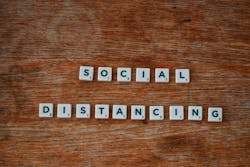Suppression of COVID-19 spread is possible, suggests new model
Suppression of the spread of COVID-19 is an attainable goal, and it can be done through strategies that ease social distancing guidelines, suggests a new model developed by researchers at Washington University in St. Louis and the Brookings Institution.
“Suppression means not just ‘flattening the curve’ by spreading out infections over time, but ongoing containment that prevents sustained spread and a large number of new cases,” said Ross Hammond, the Betty Bofinger Brown Associate Professor at the Brown School and collaborator on the TRACE (Testing Responses through Agent-based Computational Epidemiology) model. TRACE is a sophisticated computational simulation to inform policy responses to the COVID-19 pandemic in the United States.
“Our analysis, based on the TRACE model, identifies promising intervention strategies to successfully suppress the spread of COVID-19 while allowing relaxation of many or all of the mass social distancing measures that have been in place across the country,” said Hammond, who is also a senior fellow in economic studies at the Brookings Institution.
“As states are reopening, many approaches involve widespread testing, coupled with contact tracing and selective quarantine,” Hammond added. “Yet key questions in designing such policies remain difficult to answer. How much testing capacity is really needed? How important is accuracy? How much capacity to trace contacts is needed? What is the most efficient way to use limited testing capacity? How might success depend on still-uncertain assumptions about the spread of the disease itself? What social distancing measures might still be needed to enhance containment?
TRACE is not a forecasting model, Hammond pointed out. It is intended instead as a policy laboratory to assist in the design of effective containment policies using testing and contact tracing, he said. One key strategy still includes limited social distancing.

